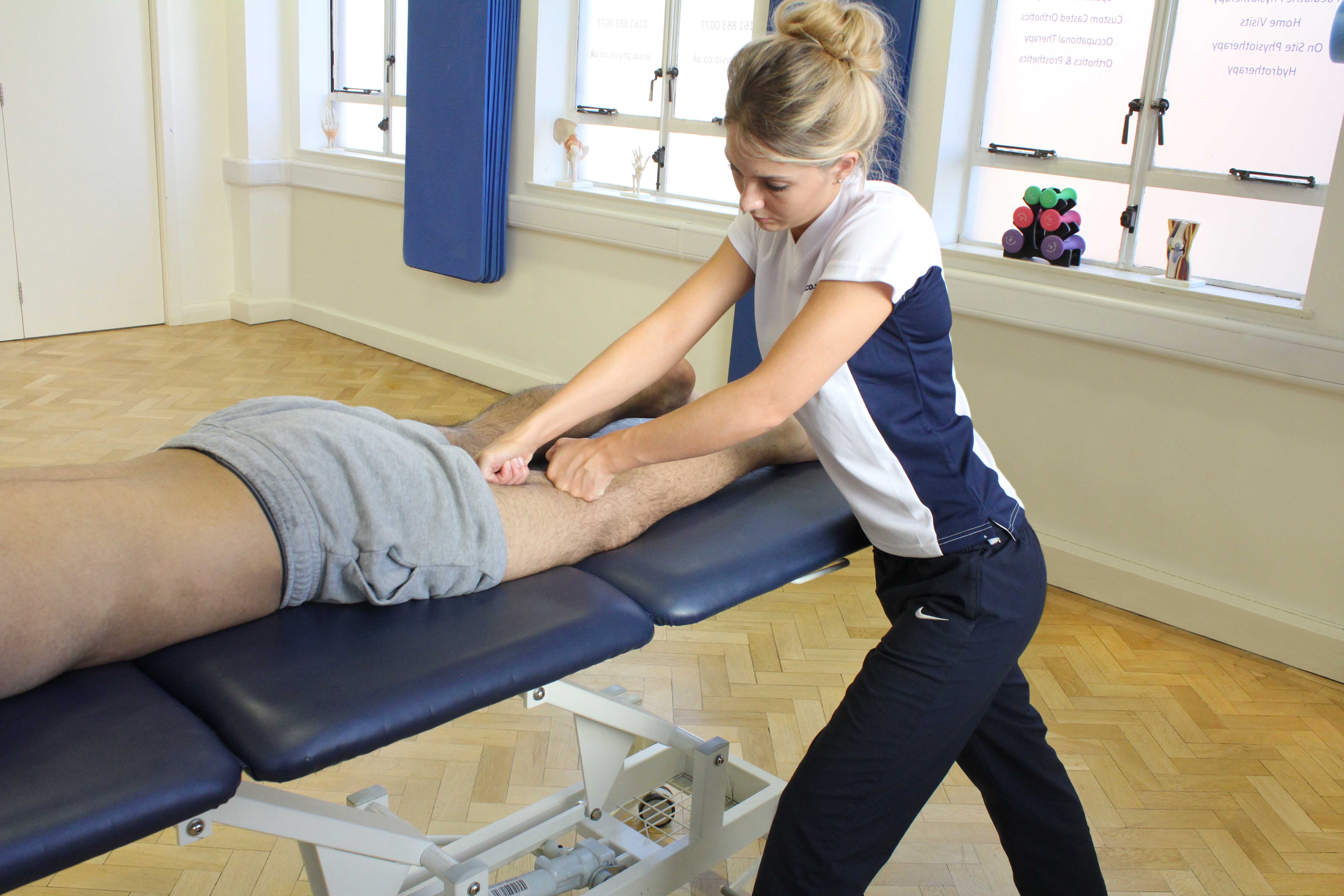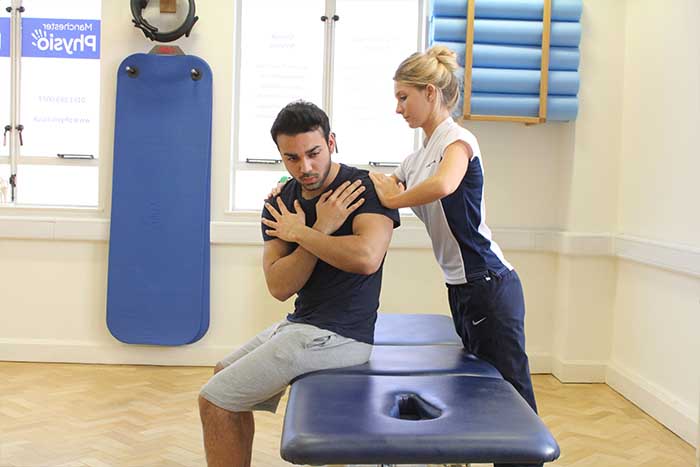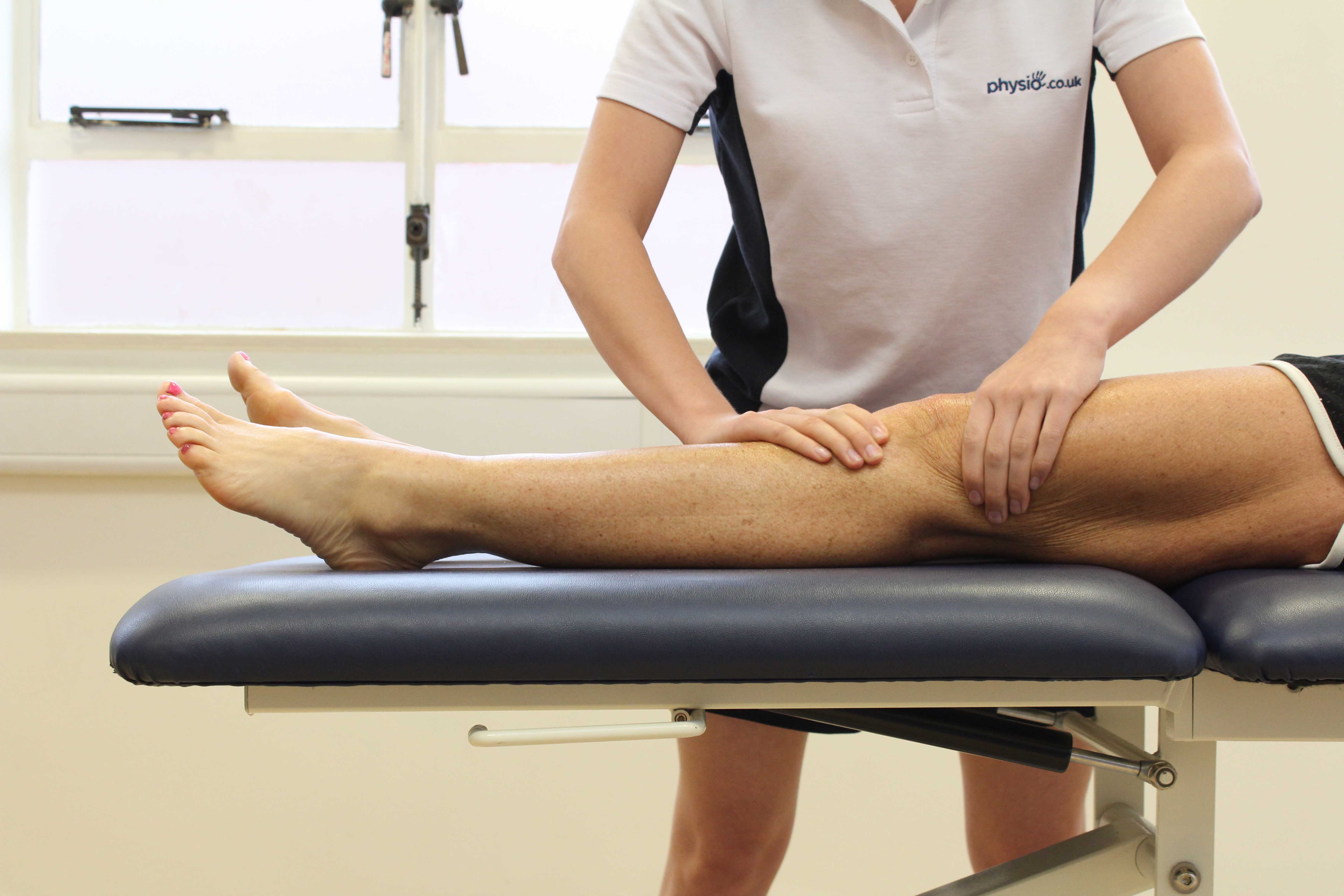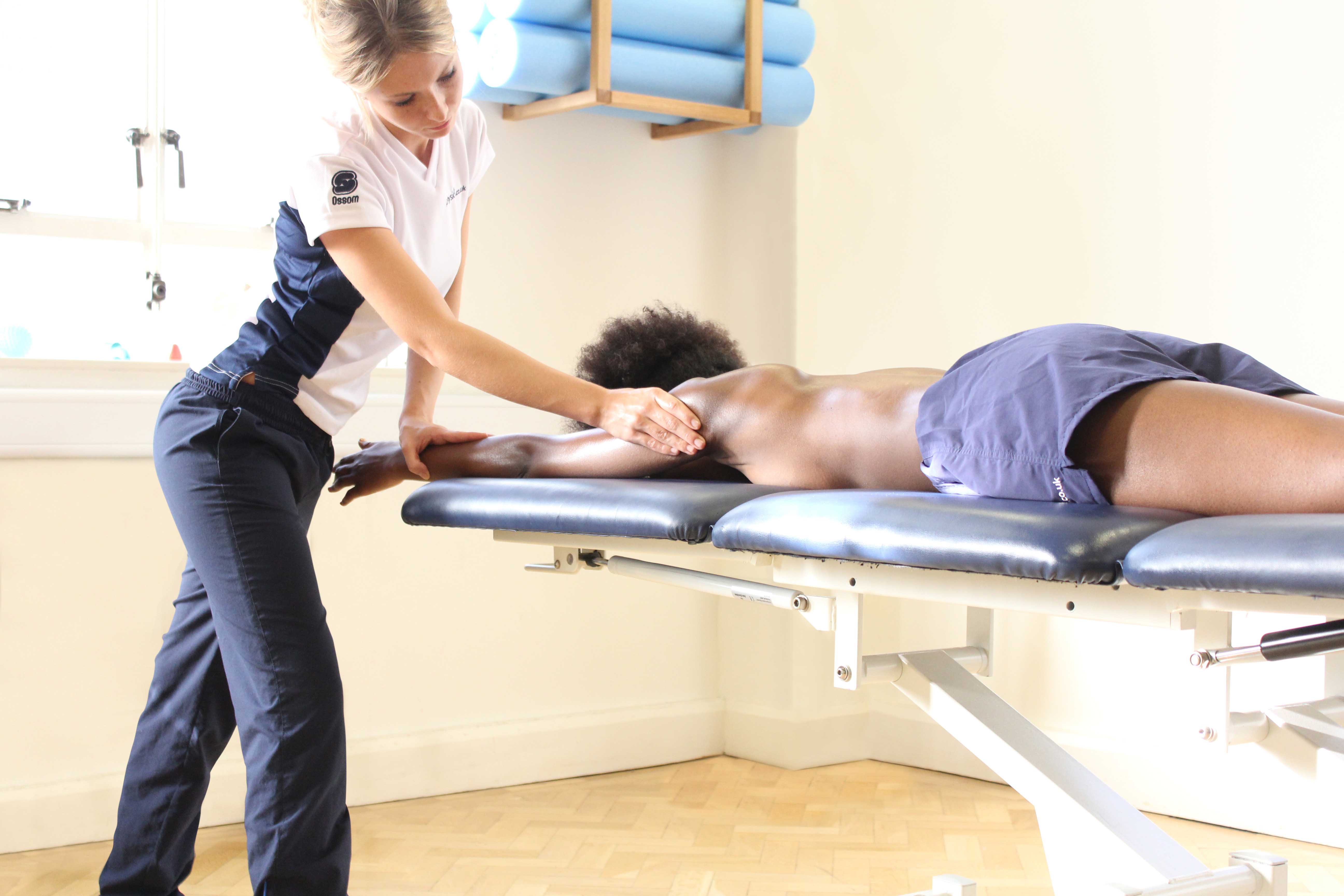Improved circulation is a benefit commonly gained through massage. There are two main types of circulation within the body, the circulation of lymph flow and the circulation of blood flow. When circulation is poor conditions such as swelling, tightness, tension and pain can increase. During a massage, the stimulation of improved circulation occurs when friction is created between the skin and fingers. Our massage therapists at Physio.co.uk improve circulation through massage to help increase healing, decrease pain and reduce swelling.
What are the most appropriate types of massage to improve circulation?
Many different types of massage are appropriate to improve circulation. The types of massage most commonly used to improve circulation include:
 Above: Imporved circulation can help regulate your blood pressure and help maintain stable energy levels throughout the day.
Above: Imporved circulation can help regulate your blood pressure and help maintain stable energy levels throughout the day.The most common types of massage used to improve circulation include sports massage, Swedish massage and remedial massage.
A sports massage helps to improve circulation. A sports massage uses a variety of techniques to help improve circulation and decrease pain. A sports massage can be an intense type of massage due to the firm pressure used throughout. A sports massage improves circulation due to the friction created between the skin and fingers. Friction created stimulates the improvement in both blood and lymphatic circulation. Improving blood circulation maintains muscles strength and energy. Improving lymphatic circulation aids in the removal of waste products and toxins from within the body, promoting healthier muscles.
Circulation is improved through Swedish massage. A Swedish massage is a gentle type of massage that encourages relaxation both physically and mentally. As well as encouraging relaxation, Swedish massage decreases muscle tightness and tension due to varied pressure and techniques used throughout. A Swedish massage improves circulation of both blood and lymph flow. Friction created between skin and fingers encourages an improved in circulation. Improving circulation of blood and lymph flow promotes heathier, stronger muscles that are less likely to fatigue and weaken during any type of activity.
A remedial massage is often used to improve circulation. A remedial massage involves manipulating both superficial and deep muscles. Manipulation of muscles encourages their relaxation through stretching and loosening of muscle fibres. When friction is formed between skin and fingers, circulation improves. An improvement in circulation is used to increase muscle temperature. An increase in muscle temperature helps to reduce muscle tightness, decrease restriction and improve relaxation. Improving circulation to decrease restriction through remedial massage helps to decrease pain.

What techniques are used to improve circulation?
A range of techniques are used within a massage aiming to improve circulation. The techniques most often used include:
 Above: Blood circulation is an important factor to ehance your overall health.
Above: Blood circulation is an important factor to ehance your overall health.The most common techniques used to improve circulation include effleurage, wringing and lymphatic drainage.
Effleurage is often used to improve circulation. Effleurage is a gentle massage technique that ranges in pressure. Flattened hands and fingers are used during effleurage in directional strokes. Effleurage stimulates the receptors within the body that cause the dilation of blood vessels. The dilation of blood vessels is also known as vasodilation. Vasodilation decreases blood pressure and allows an increase I blood flow through the vessels, therefore improving circulation of blood. Improving circulation of blood through effleurage helps to increase muscle flexibility, increasing range of movement and decreasing restriction. A decrease in restriction reduces pain.
Wringing can help to improve circulation. Wringing is where flat hands and fingers are used to pick and pull both sides of the treatment area to the centre in opposite directions. Wringing is most commonly used to loosen tight muscles, relieve tension and decrease restriction. Wringing creates friction between the skin and fingers through the picking up and pulling actions. Friction encourages an improvement in circulation. An improvement in circulation through wringing encourages metabolic wastes to be flushed from the body and healthy nutrients to be delivered to muscles.
Circulation is improved through lymphatic drainage. Lymphatic drainage is the process of applying pressure in an upwards direction along muscles in order to drain metabolic wastes towards glands and into the lymph flow. Swelling often occurs around a site of injury, blocking the lymph flow. A massage stimulates the lymphatic system. Stimulation of the lymphatic system speeds up lymph flow and the removal of excess fluids and toxins. Removing excess fluids and toxins from the body more efficiently by improving lymph flow through lymphatic drainage, reduces swelling and decreases pain.

When can a massage help to improve circulation?
A massage can help to improve circulation in many situations. The most common situations improved circulation through massage can help include:
 Above: Imporved circulation can help regulate your blood pressure and help maintain stable energy levels throughout the day.
Above: Imporved circulation can help regulate your blood pressure and help maintain stable energy levels throughout the day.The most common situations improved circulation through massage can help include relaxation, post injury and tight muscles.
Improved circulation through massage can help increase relaxation. Relaxation can be restricted for a variety of reasons. The most common reasons for a lack of relaxation include poor posture which contributes towards an increase in muscle tension and restricts movement. A massage stimulates an increase in blood flow around muscles within the body. An increase in blood flow helps to rise muscle temperature. A rise in muscle temperature improves the elasticity of muscle fibres allowing an increase in range of movement and decrease in restriction. Increasing tissue elasticity and decreasing restriction enables muscle to relax and posture to return to normal.
The effects of injury can be reduced when circulation is improved through massage. After an injury, swelling can often occur. Swelling can increase pain and decrease healing. Lymphatic and blood circulation are both improved during a massage. Improving lymphatic circulation helps to drain excess fluids and metabolic wastes contributing towards swelling and the prevention of healing, into the lymph flow. Once within the lymph flow, the excess fluids and metabolic wastes are pushed in the direction of glands to then be removed from the body. An improvement in blood circulation provides muscles with increased levels of oxygen and essential nutrients that are used for the repair of damaged muscle fibres and cells. Improving blood and lymphatic circulation therefore helps to decrease swelling, reduce pain and increase healing.
Tight muscles can be treated when circulation is improved through massage. Tight muscle can occur for many different reasons. The most common causes of tight muscles include poor posture, injury and overuse. Tight muscles are relieved when blood circulation is improved. An improvement in blood circulation occurs due to the friction created between the skin and fingers. Muscle temperature increases as circulation improves. Tissue inelasticity and inflexibility is decreased as muscle temperature increases. An increase in muscle elasticity and flexibility allows a muscle to loosen and relax. Loosened and relaxed muscles reduce muscle tightness.
What are the physiological effects of massage to improve circulation?
There are many physiological effects of massage that improve circulation. The most common physiological effects that occur during a massage include:
The most common physiological effects of massage that improve circulation include increased vasodilation, increased capillarisation and increased venous return.
Increased vasodilation through massage can help improve circulation. Vasodilation is the process of widening blood vessels and bringing them closer to the skins surface. As smooth muscles lining blood vessels relax, blood pressure is reduced and restriction is decreased. Decreasing blood pressure and restriction allows an increase in blood to travel through the vessels. Allowing more blood to travel through the vessels improves circulation as blood is transported around the body at a faster rate.
A common physiological effect that occurs during massage to improve circulation is increased capillarisation. Capillarisation is where the quantity of capillaries surrounding a muscle increases. Increasing the quantity of capillaries surrounding a muscle increases blood flow to the muscles and makes it easier for oxygen and nutrients to be transferred from blood to muscle. An increase in oxygen and nutrients available to muscles increases muscle health and energy. Increasing capillarisation improves circulation due to more blood being available for muscles to use.
Circulation is improved as massage increases venous return. Venous return is the rate of blood flow back towards the heart. Venous return helps to improve both blood and lymphatic circulation. Increasing venous return increases blood flow around the body, allowing it to pick up waste products and toxins from within the lymph flow more efficiently. The quicker to rate of blood flow, the more lymph flow works efficiently to help remove the metabolic wastes more efficiently. Reducing the amount of metabolic wastes within the body improves muscle condition and promotes healthier stronger muscles.
Summary
Improved circulation involves increasing both blood and lymph flow to help improve their efficiency. There are a variety of types of massage that can be used to improve circulation including sports massage, Swedish massage and remedial massage. A range of techniques including effleurage, wringing and lymphatic drainage are all used within a massage to help improve circulation. Using massage to improve circulation helps to improve relaxation, the effects of injury and muscle tightness. There are various physiological effects that can occur during a massage to help improve circulation, the most common being increased vasodilation, increased capillarisation and increase venous return. Our massage therapists at Physio.co.uk improve circulation through massage to help improve muscle condition, decrease tightness and improve relaxation.
How can I arrange a massage to improve circulation?
The easiest way to arrange a massage to improve circulation at Physio.co.uk, email us at office@manchesterphysio.co.uk or call us on 0161 883 0077.
You can also book an appointment online and save £10

 0330 088 7800
0330 088 7800


































